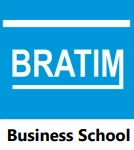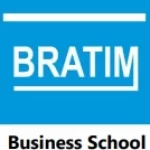The Challenge Of Global Learning In Public Education
The Challenge Of Global Learning In Public Education
For every person reading this quick preview, probably 18 more skimmed right past, busy trying to survive right here, right now. This makes sense.
Even when it does get attention, it is often bursting with rhetoric and emotion—discussed in tones of enthusiasm (we should do it—the students deserve it!) and grey stereotypes (we Zoom’d with a classroom in Peru last week—if that’s not global, I don’t know what is).
In high-stakes testing environments prevalent in many formal learning institutions, the focus is on standards and standard-mastery. ‘Globalization’ is a haughty kind of ‘pie in the sky’ idea thought about only when watching one of the “Shift Happens” videos on YouTube, or daydreaming on the drive home from a challenging day in the classroom where there is time to honestly reflect on—in solitude—the kind of education teachers can only dream they could provide students.
Now over a decade into the 21st century, there is tremendous pressure for education to ‘globalize.’ What this means exactly isn’t universally agreed upon.
Does Globalization Play A Role In Learning?
For education, globalization is the natural macro consequence of meaningful micro placement.
Globalizing a curriculum isn’t (initially) what it might seem. To globalize, start small—with the self.
Now over a decade into the 21st century, there is tremendous pressure for education to ‘globalize.’ What this means exactly isn’t universally agreed upon. In major world markets, the business world globalized decades ago, expanding beyond domestic markets in pursuit of more diverse audiences and stronger profits.
And while major players in business continue to experiment and find their way in markets whose culture and buying practices diverge from those domestic, the ‘field’ of education has been slow to follow suit.
This is made all the more strange by the relationship between education and economic systems. If one goal of education is to prepare a ‘workforce,’ the more parallel the system of education is with the workforce, the less ‘waste’ there might be. While industrialism, commercialism, religion, and technology all reach out across political and geographical borders, education lags awkwardly behind.
The most startling reality here might be the jarring power of juxtaposition: stakeholders in education everywhere struggle for change—meaningful, sustained movement in a new direction–yet within education overall, there is relatively little progress compared to tangent fields, including science, technology, entertainment, and business.
For education, somewhere there is a tether, likely rooted in sentimentality and disconnection. The learning process has become so culturally detached from the communities it is designed to serve that families are no longer sure what quality education looks like, resulting in blind trust of an education system that struggles itself to plan, measure, and remediate learning, all the while families stand aside unsure of their role.
Defining Global Learning
Globalization is less a singular initiative than it is the effect of a thousand initiatives, many of which are currently under-developed. When defining a ‘global curriculum,’ one issue that must be confronted is the issue of perspective: Do we all have the same definition of ‘global,’ and do we understand the word “curriculum” on common ground?
In brief, let’s agree that in this context, ‘global’ is a word that describes anything that is truly worldwide in its awareness, interdependence, and application. Right away, the scale of any such endeavor should appear, at best, intimidating, and, at worst, impossible with any degree of intimacy. Beyond that which is geologic and atmospheric, few things can truly maintain wholeness while being ‘global.’ Global implies a scale that’s not just ambitious and comprehensive, but truly inclusive by definition. Things can’t be ‘partially global’ any more than the lights can be partially turned on.
So if ‘global’ is fully interdependent and inclusive, what about the curriculum part? For the purpose of this piece, we’ll say that a curriculum is intentionally designed of learning content and experiences. It may be more or less planned and scripted, created backward from a sort of curriculum map into units, lessons, and activities, or far more open as ‘learning pathways,’ each a different style of curriculum. To clarify, learning standards such as the Common Core are not curriculum, but are rather ingredients with which you can create your own.
So what then does a ‘global curriculum’ require and imply? And how do we get there from here?
The term ‘global’ tends toward business, marketing, and technological connotation, which is always dangerous. The ambition of business leaders, technology inventors, and scientists alike shows less respect for the practical than the possible. While exciting in theory, it flaunts a hubris that should serve as a warning for fields with much more to lose than money or shareholders.



